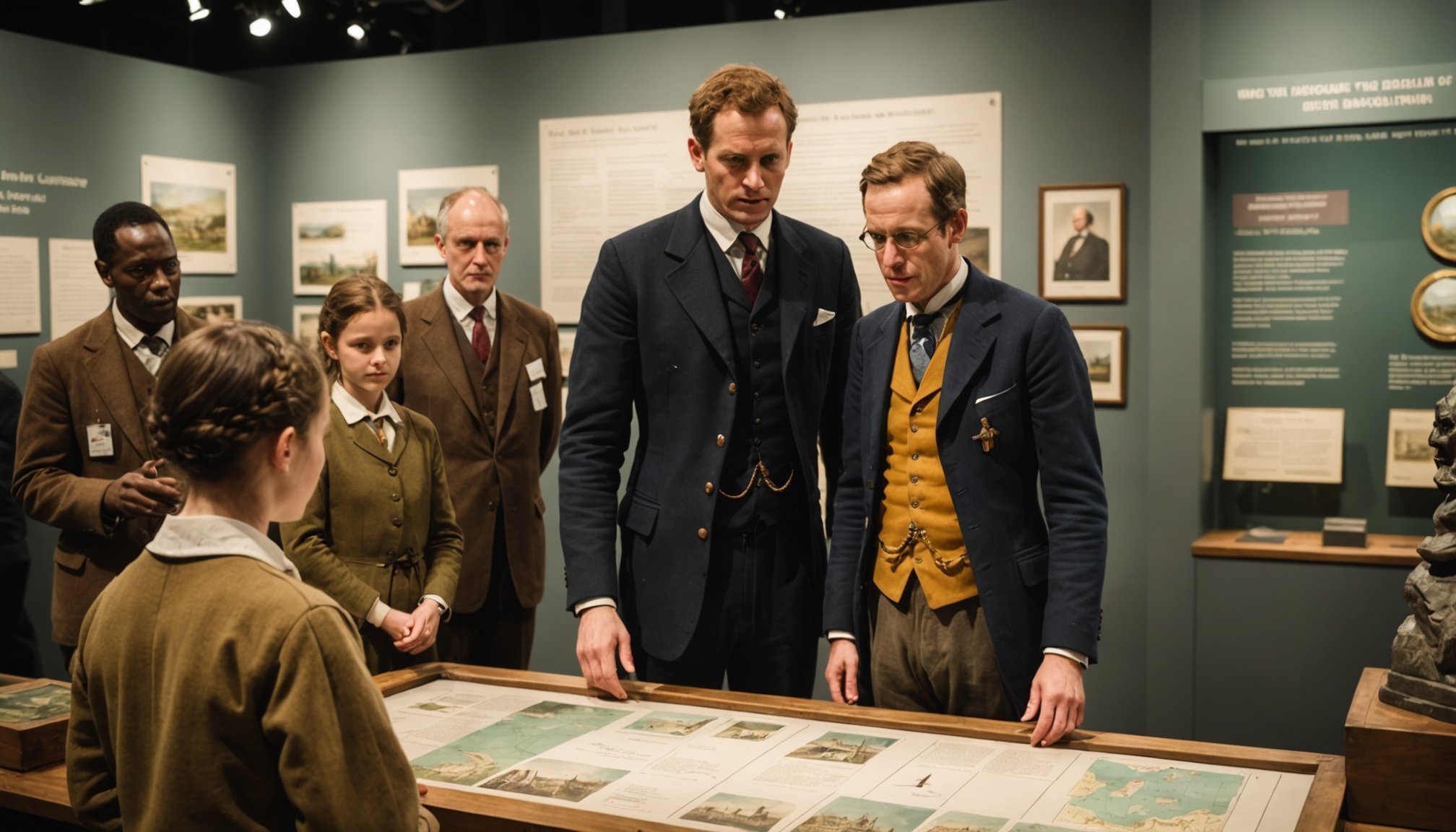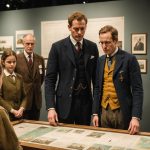Museums, traditionally seen as treasure troves of antiquity, have transformed in the digital age. No longer are they merely buildings filled with static displays, but dynamic, interactive arenas where history comes alive. They offer a uniquely immersive way to learn about the past, particularly aspects like British colonialism. This article will explore how you can learn about the history of British colonialism through interactive exhibits in different museums.
The British Museum: An Icon of History
The British Museum, situated in the heart of London, is a colossal monument to human history and culture. Its vast collections, born out of British colonialism, encompass over two million years of history. The collection includes millions of works, many of which are on display in its vast galleries. But, these aren’t simply objects gathering dust in a display case. They are stories waiting to be told, and many of them delve into the intricate web of British colonial history.
Have you seen this : What are the best locations to experience traditional Scottish ceilidh dancing?
The museum recently launched an innovative project in collaboration with a team from the University of Leicester. They aimed to reimagine the museum’s collections, presenting them in a new light. Through a series of interactive exhibits, visitors can explore the history of the British Empire in an immersive, engaging way. You interact with countless objects, each offering a unique insight into the colonial period.
Whether it’s the exquisite Indian art plundered during colonial rule or the African artifacts that tell tales of exploitation, each object offers a window into a different facet of British colonial history. Visitors learn about colonialism not through dry textbooks, but through tangible objects and engaging interactive technology.
In parallel : What are the best spots for an immersive experience in the history of British literature in Stratford-upon-Avon?
The American Museum in Britain: A Unique Perspective
Situated in the Somerset countryside, the American Museum in Britain offers a unique perspective on the history of British colonialism. The museum houses the finest collection of American decorative and folk art outside of the United States, offering an immersive journey through American history from the early settlers to the twentieth century.
A key part of the museum’s mission is to explore the common roots and divergence of British and American history. Their collections and interactive exhibitions shed light on the British Empire’s influence on the development of the United States.
The museum’s interactive exhibits let you experience colonial life firsthand. A reconstructed colonial kitchen allows you to see, smell, and even taste the food common during that era. In contrast, an interactive map traces the routes of the British Empire across the Atlantic, highlighting the tremendous reach and impact of British colonialism.
Museum of British Colonialism: An Online Exhibition
The Museum of British Colonialism is an ambitious project that seeks to visually document and explore the British colonial period in a comprehensive way. Although it doesn’t have a physical location, its virtual exhibits make history accessible to people worldwide, enabling them to learn about colonialism from the comfort of their homes.
The museum’s exhibits are a combination of 3D models, virtual reality experiences, and digital archives. These interactive elements, combined with thoroughly researched narratives, make the history of British colonialism accessible and engaging. For example, the ‘3D Mau Mau’ project uses 3D modelling and virtual reality to recreate scenes from the Mau Mau Uprising in Kenya, a key event in the history of British colonialism.
The Pitt Rivers Museum: Unpacking the Empire
The Pitt Rivers Museum in Oxford forms part of the University of Oxford’s collection and is renowned for its archaeological and ethnographic collections from across the world. The museum has launched an initiative titled ‘Unpacking the Empire’, which, through a series of interactive exhibitions, reinterprets the collections in the context of colonialism.
This initiative aims to shed light on how many of the museum’s objects were collected during the British Empire’s height and the often complex and controversial circumstances surrounding their acquisition. The interactive displays allow visitors to delve deeper into the history of each object, revealing the intricate ties to the British Empire.
The Victoria and Albert Museum: Art and Design in the Empire
The Victoria and Albert Museum in London, widely known for its vast collection of art and design, also offers insightful interactive displays about British colonial history. A particular focus is given to the impact of colonialism on art and design. The museum’s collections, encompassing objects from across the colonies, offer an insight into the aesthetics, tastes, and values prevalent during the colonial period.
The interactive exhibitions at the museum allow visitors to explore a wide range of objects, from Indian textiles to Caribbean sculptures, each laden with the history of the British Empire. Through these interactive exhibitions, visitors are encouraged to consider the influence of colonialism on the creation and acquisition of these objects. This approach offers a unique perspective on the history of British colonialism, highlighting its influence on art and design.
In conclusion, interactive museum exhibits offer engaging and immersive ways to learn about the history of British colonialism. Whether it’s through the tangible history of the British Museum, the American perspective offered at the American Museum in Britain, the online exhibits of the Museum of British Colonialism, the archaeological collections of the Pitt Rivers Museum, or the art and design at the Victoria and Albert Museum, each institution offers unique insights into this critical period in history. The interactive nature of these exhibits transforms learning into an engaging experience, breathing life into the pages of history.
The Royal Academy: Entangled Pasts
The Royal Academy of Arts in London, one of the oldest and most prestigious art institutions in the world, offers a unique viewpoint on British colonialism. It hosts regularly changing exhibitions that often explore the entangled pasts of the British Empire and its colonies.
One of the key exhibits that delve into British colonial history is ‘Entangled Pasts’. This exhibit displays a vast collection of works by artists who have been influenced by, or responded to, the British Empire’s history. It covers a wide range of topics, including the transatlantic slave trade, Native American histories, and the impact of the colonial period on modern society.
The exhibit is deeply interactive, encouraging visitors to engage with the artwork and the history behind it. Through a series of QR codes, visitors can access detailed information about each art piece, artist, and the historical context. This information is often presented through a combination of text, audio clips, and video interviews, offering a multifaceted understanding of the artwork and the period it represents.
Among the highlights of the exhibit are pieces dealing with the American Revolution and its aftermath. These works, created by both British and American artists, provide an insight into the tumultuous period and the role of the British Empire.
The exhibit also addresses the controversial issue of repatriation of human remains and artifacts. Visitors can learn about the complex debates surrounding the return of cultural objects or human remains to their countries of origin, a matter that continues to resonate within the museum community.
University of California: Debating Imperial & Colonial Histories
On the other side of the Atlantic, the University of California has developed an innovative approach to presenting British colonial history. The University has taken its vast collection of historical artifacts, books, and documents and provided them with a digital platform that enables a wide audience to learn about the British Empire.
The University’s ‘Debating Imperial & Colonial Histories’ is an online exhibition that uses digital technology to make historical artifacts interactive. For instance, visitors can zoom into high-resolution images of historical documents, revealing the intricate details and annotations that transport them back to the colonial era.
This online exhibit also includes a series of interactive maps that trace the British Empire’s reach and influence across the globe. Utilizing a sprite icon, users can navigate through time and space to understand the enormous span of the British Empire. Detailed narratives accompany each interactive element, drawing on the latest research to provide a balanced view of the British Empire’s history.
Lastly, the exhibit hosts a forum where visitors can participate in debates and discussions about colonial histories and their legacies. This engagement encourages active learning, transforming the exhibit from a simple display to a dynamic, participatory learning experience.
The transformation of museum displays from static exhibits to interactive ones has revolutionized the way we learn about history. These interactive exhibits offer a deeper, more holistic understanding of the British colonial past, making history come alive in ways that textbooks and lectures often fail to do.
Whether it’s the meticulous collections of the British Museum, the unique American perspective presented at the American Museum in Britain, the immersive online exhibits from the Museum of British Colonialism, the nuances of colonial acquisitions at the Pitt Rivers Museum, the artistic influences at the Victoria and Albert Museum, the entangled histories at the Royal Academy, or the digital platform of the University of California, each institution provides a unique pathway into understanding British colonialism.
Interactive museum displays encourage active learning, foster critical thinking, and allow us to engage with history in a personal and meaningful way. The histories and legacies of British colonialism are complex and multifaceted, and these exhibits provide a platform to explore, question, and understand this critical period in human history.











